
- SAP Community
- Products and Technology
- Enterprise Resource Planning
- ERP Blogs by SAP
- Intelligent ERP Update: SAP S/4HANA Cloud 1908 Rel...
Enterprise Resource Planning Blogs by SAP
Get insights and updates about cloud ERP and RISE with SAP, SAP S/4HANA and SAP S/4HANA Cloud, and more enterprise management capabilities with SAP blog posts.
Turn on suggestions
Auto-suggest helps you quickly narrow down your search results by suggesting possible matches as you type.
Showing results for
Employee
Options
- Subscribe to RSS Feed
- Mark as New
- Mark as Read
- Bookmark
- Subscribe
- Printer Friendly Page
- Report Inappropriate Content
08-05-2019
8:00 AM
Highlights of the SAP S/4HANA Cloud 1908 Release
We’re proud to announce the general availability of our SAP S/4HANA Cloud 1908 release today.
With our new product release, we are proving once more that we are powering the customer journey to the intelligent enterprise. We are providing the most complete and intelligent ERP on the market. Our SAP S/4HANA Cloud 1908 release includes innovations across all lines of business and industries.
While driving digital transformation, we have released our first intelligent Robotic Process Automation (iRPA) solution. This tool goes beyond a traditional user interface and automates many of the repetitive tasks across SAP and non-SAP systems.
This blog post covers the latest and greatest SAP S/4HANA Cloud 1908 highlights. For a quick overview, check out my video below.
Bank Statement Reprocessing Rules
When entering bank statements into the system, this can be done either automatically or manually. In both cases, the SAP S/4HANA Cloud system assigns and clears the payments automatically. Whenever automatic processing is not successful, manual reprocessing is required. You can easily define reprocessing rules based on manual reprocessing activities and apply them to other bank statements to be reprocessed. These rules can be run standalone, in a group or automatically when a new bank statement is posted. This increases efficiency, throughput and quality, and decreases errors and costs.
Integrated Financial Planning with SAP Analytics Cloud (SAC) and SAP S/4HANA Cloud: Revenue Planning
Extend the capabilities of SAP S/4HANA with SAP Analytics Cloud for Planning to deliver an integrated financial planning solution. With this we provide extensive planning, budgeting, forecasting and simulation functionality based on the Accounting Documents Plan (ACDOCP). Integration between SAP S/4HANA and SAP Analytics Cloud (SAC), our main planning tool for SAP S/4HANA Cloud for Finance, is available and covers transaction and master data exchange. With 1908 we provide additional planning content for revenue planning. Based on the SAP S/4HANA data model in FI-CO, Revenue Planning with SAC is allowing to derive and plan sales prices, simulate and plan sales quantities, plan deduction and derivations in percent, calculate revenues and inspect the planned profit and loss revenues.
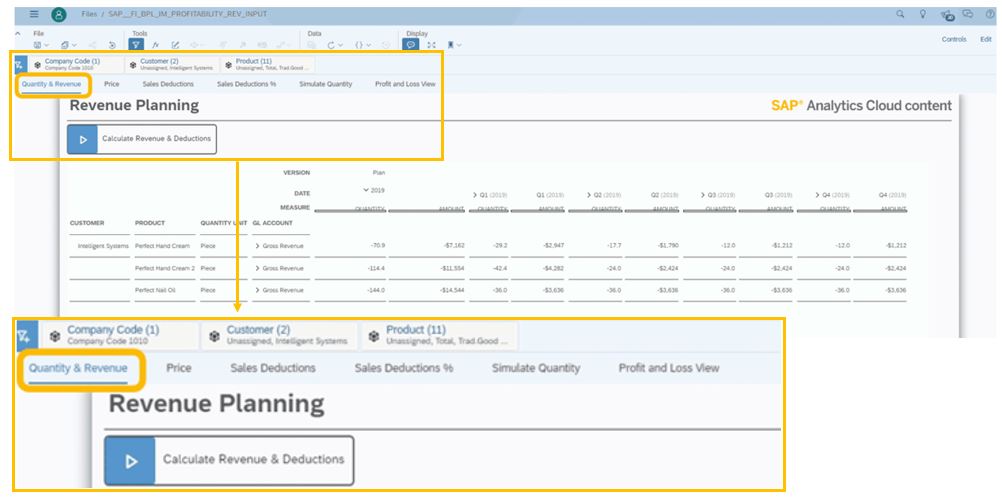
Figure 1: Revenue planning with SAP Analytics Cloud is fully integrated with SAP S/4HANA Cloud
Predictive Material and Resource Planning (pMRP)
With SAP S/4HANA Cloud 1908 we provide our new simulative mid- and long-term planning in Manufacturing: pMRP. The goal of pMRP is to identify potential capacity issues and to evaluate possible solutions as early as possible based on a simplified requirements plan. Using a simplified material requirements algorithm and with the help of a simulation, you can take informed decisions even when conditions are changing, e.g. with regard to requirement planning, resource plans, preproduction or make-or-buy decisions. Newly designed SAP Fiori apps help you to interactively resolve capacity issues and minimize inventory at the same time.
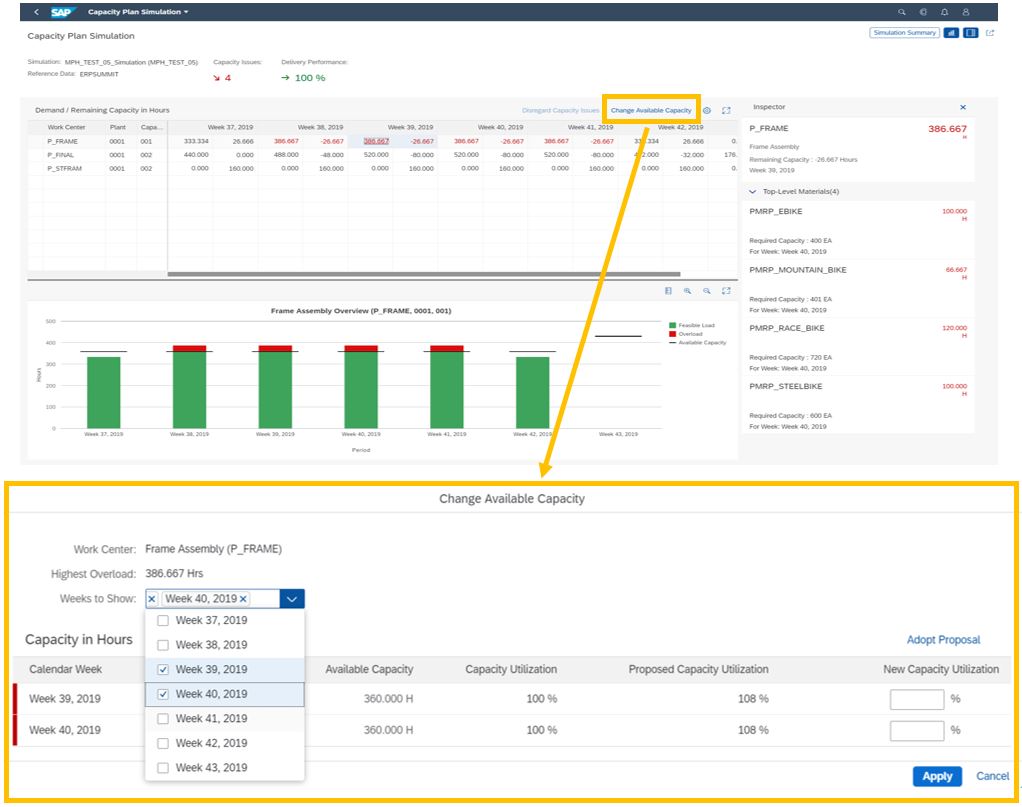
Figure 2: Use our SAP Fiori app ‘Capacity Plan Simulation’ to simulate a change of the available capacities
Overdue Stock in Transit Situations
In the area of Inventory Management we’re releasing a situation handling process for Overdue Stock in Transit. You can make use of this new feature whenever there are overdue materials for which a stock transport order has been created by simply creating your own ready-to-use situation for overdue stock transport order items using the app ‘Manage Situation Types’. With the pre-delivered situation template MAN_MATLOVERDUESITSITN, you can immediately inform responsible team members on delayed items. After they’ve been informed, they can easily monitor overdue stock transport order items according to the defined conditions in the situation and can take further actions if necessary.
Intelligent Approval Workflow
SAP S/4HANA Cloud 1908 adds new intelligence with new Machine Learning use cases, such as the Intelligent Approval Workflow in Procurement. This scenario allows you to classify important and unimportant purchase requisition approvals. This is done by weighting them with a confidence factor by analyzing the approval pattern history based on price, source of supply, material group, approvers, attachments, and more. It supports the approver to approve all less critical approvals and only focus on critical work items instead. How is this done? The purchase requisition details are sent to the SAP Cloud Platform which calculates the confidence level for the approval. The calculated confidence level is displayed to the approver in the app “My Inbox”.
Situation Handling for RFQ Submission Deadline
Next to the situation handling scenario in Manufacturing, we’re also enriching Sourcing and Contract Management with a new situation handling process for RFQ Submission Deadline. This new situation calls your attention to RFQs with the approaching submission deadline and a low number of submitted supplier quotations. The automatic system detection of such critical situations helps you to react in time to resolve the situation. When the system draws your attention to such situations, you can promptly contact invited bidders that haven't yet submitted a quotation and avoid loss of time and money.
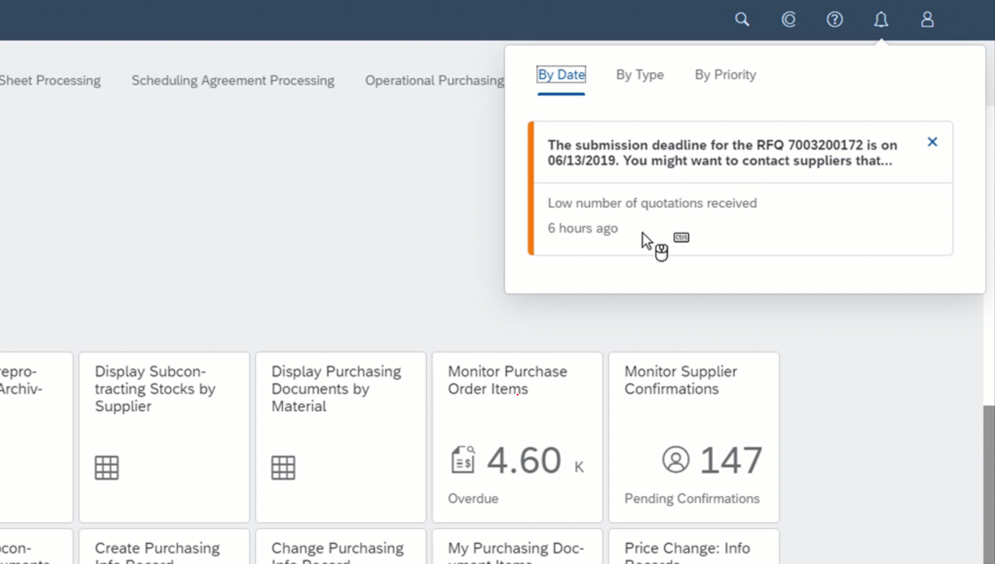
Figure 3: Within the Procurement Overview Page the user receives a notification triggered by the system if there is an RFQ with an approaching submission deadline
Service Management Process
With Composite Services we enable you to offer service products, service parts and expense items as a composite service. A composite service can consist of a main item and one or more subitems. Your customer receives a billing document for the main item only while subitems are not listed. You can use these composite services to analyze profit margins at the level of the main item by bundling costs and revenues for overall service order profitability.
Additionally, we provide basic integration of SAP Field Service Management when a service call is received through API for service order. Having this feature in place, the system automatically optimizes field service processes when a service call is received in SAP Field Service Management. The integration ensures a seamless, fast and flexible delivery of field services, and therefore helps you to provide more efficient customer services.
New Contract Type for Usage Based Billing
Within the professional services industry we release Usage Based Billing, which enables you to bill services with a certain usage volume. Next to the three types which have already existed – the fixed price, time & expense and periodic service price – Usage Based Billing is the fourth contract type. This new feature reduces manual efforts in configuring the billing of outcome-based services and it also enhances the standard configuration to enable accurate revenue recognition across the comprehensive scenario for usage-based billing, which we offer during the project planning including correct revenue recognition results.
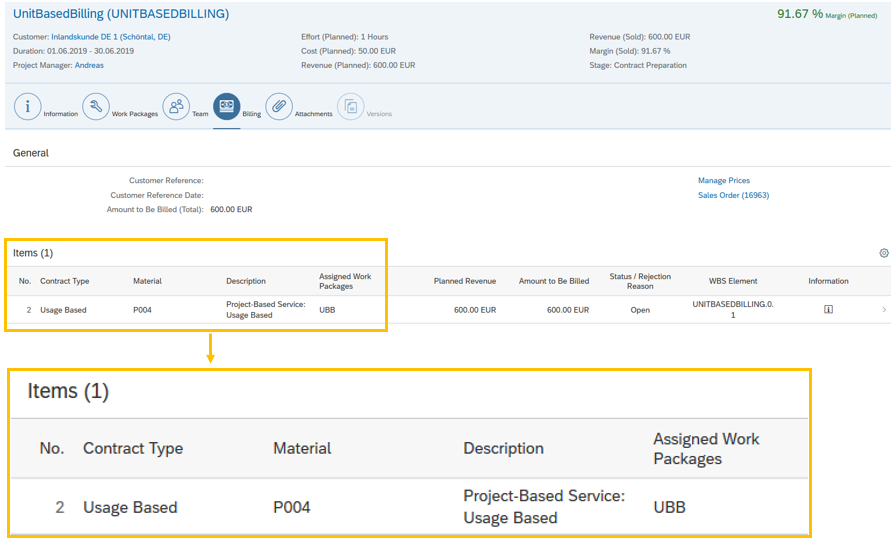
Figure 4: With Usage Based Billing you can bill services with a certain usage volume
Project Cost Prediction by Timeline and Cost Components
Already with SAP S/4HANA Cloud 1805 we have released the first functionalities for project cost forecasting. With our new release we enable more accurate cost predictions and increased transparency around the prediction process. During the planning and during the execution phase of projects we now provide information about different cost components, which gives you a comparative view of the costs, the prediction costs, the planning as well as the actual and commitments, segregated across cost components. Additionally, we enable a new section about similar projects which helps you to understand which projects have been considered in order to run the cost prediction.
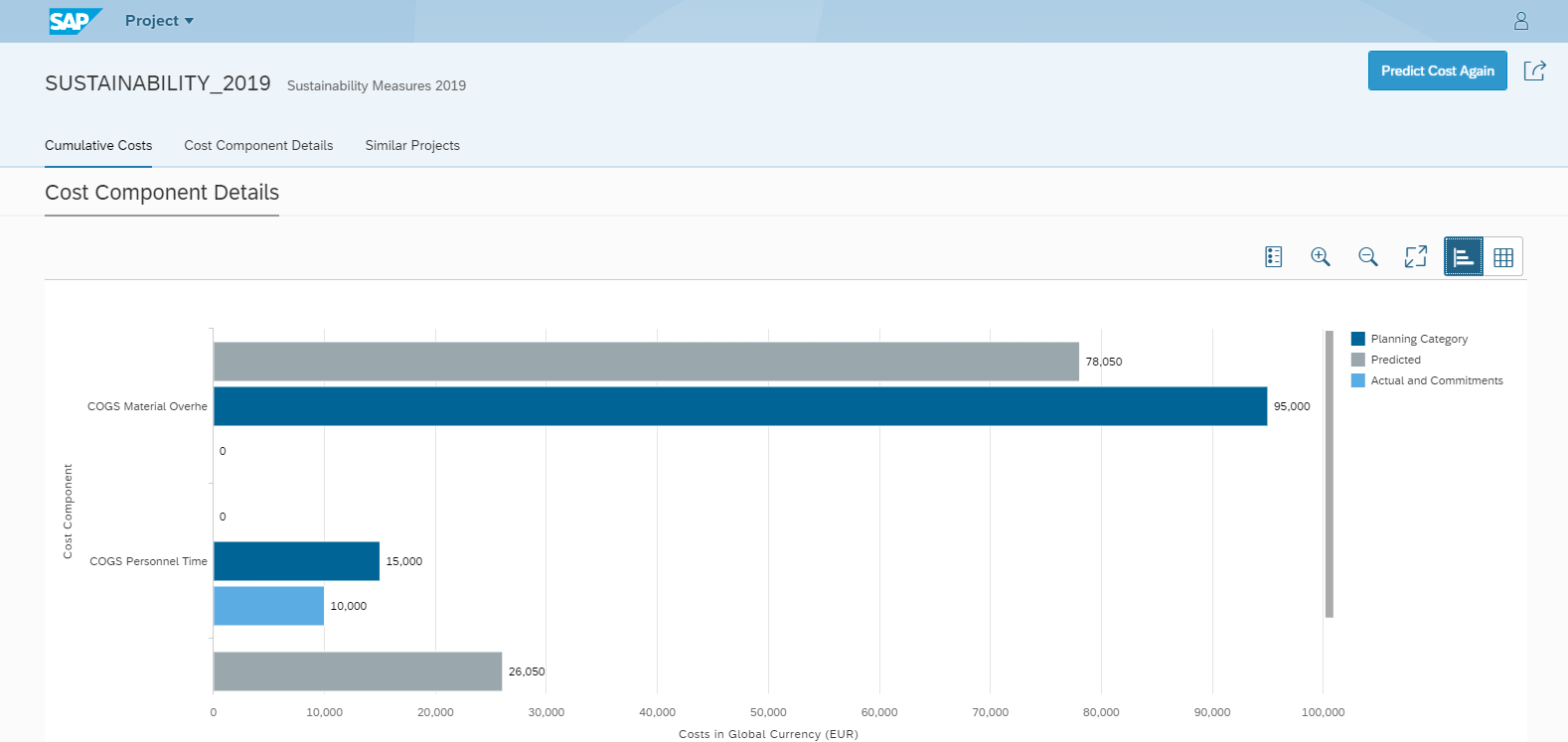
Figure 5: The new section about cost components offers a comparative view of the costs segregated across components
Reporting for Sales Quotations and Customer Returns with SAP Analytics Cloud
Another SAC integration example which is provided with SAP S/4HANA Cloud 1908 is in the area of Sales and Distribution. Our latest release has two new dashboards in store for you in order to support you in your analysis. Our Quotation Dashboard helps you to get an overview of how successful your sales team is in converting quotations into sales orders and delivers information on reasons for rejection. With the Returns Dashboard you can gain insights into sales returns and improve your business performance.
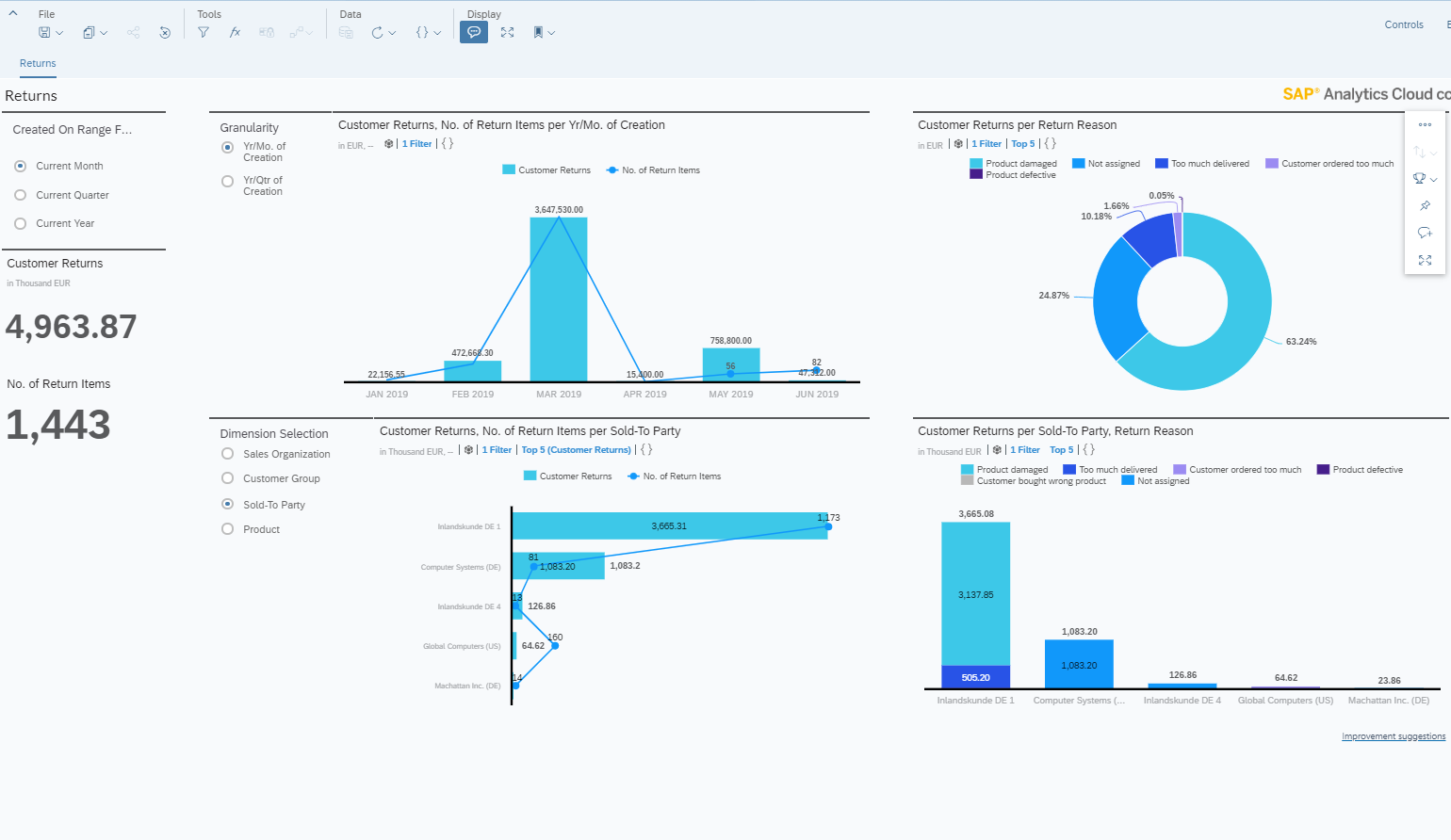
Figure 6: The new ‘Returns Dashboard’ in SAP Analytics Cloud helps you to learn from returns by providing analytical insights
Extended Integration into Outbound Delivery Processing
With the extended integration into outbound delivery processing you can monitor and manage issues in the delivery processing due to compliance reasons. Within the ‘Sales Order Fulfillment Issues’ app and the ‘Manage Outbound Deliveries’ app we introduce the two fields ‘Dangerous Goods Status’ and ‘Safety Data Sheet Status’, while the latter is on top extended by the ‘Product Marketability Status’ field. These additions will ultimately help you to stay on top of your outbound deliveries.
Centralized Pricing Master
With SAP S/4HANA Cloud 1908 we also enhance the Hybrid Cloud environment. Centralized Pricing Master enables you to create, read, update and delete pricing condition records in SAP S/4HANA Cloud from an external system, by reducing manual efforts in creating pricing condition records in multiple tiers which use SAP S/4HANA Cloud. You can create pricing conditions with validity, pricing scales, and condition record supplements, and replicate purchase price condition records using the data replication framework from SAP S/4HANA Cloud to SAP and non-SAP software systems.
As mentioned already at the beginning of this blog, we have invested in SAP iRPA. With SAP Intelligent Robotic Process Automation we have improved product features and several innovations in our latest release. As part of the “SAP Best Practices for SAP Intelligent Robotic Process Automation Integration with SAP S/4HANA” we provide end-to-end automation stack for self-driving enterprise with a strong focus on SAP S/4HANA. The innovations help to better manage project-based services and component manufacturing projects and motivates enterprises to run independent ERP systems in the Cloud.
The top three business-driven innovations are ‘Mass Change of Names for Commercial Project Attributes’, ‘Production Order Operation Confirmation’ and ‘Physical Inventory Count - Upload Count List’. These capabilities accelerate digital transformation of business processes with SAP S/4HANA by automatically replicating tedious actions.
Last but not least, I would like to draw your attention to our upcoming SAP S/4HANA TechEd events which take place around the globe after the summer holidays. We’re planning more than 30 lectures and more than 20 hands-on workshops, so come and meet me and my colleagues and find out about our future plans for SAP S/4HANA Cloud! Follow this link to find out more about the upcoming events and how to register.
Do you want to learn more about SAP S/4HANA Cloud 1908? Stay tuned for the updates that my colleagues will be providing within the next couple of days.
For more information on SAP S/4HANA Cloud, check out the following links:
Follow us via @Sap and #S4HANA, or myself via @SDenecken
We’re proud to announce the general availability of our SAP S/4HANA Cloud 1908 release today.
With our new product release, we are proving once more that we are powering the customer journey to the intelligent enterprise. We are providing the most complete and intelligent ERP on the market. Our SAP S/4HANA Cloud 1908 release includes innovations across all lines of business and industries.
While driving digital transformation, we have released our first intelligent Robotic Process Automation (iRPA) solution. This tool goes beyond a traditional user interface and automates many of the repetitive tasks across SAP and non-SAP systems.
This blog post covers the latest and greatest SAP S/4HANA Cloud 1908 highlights. For a quick overview, check out my video below.
Finance
Bank Statement Reprocessing Rules
When entering bank statements into the system, this can be done either automatically or manually. In both cases, the SAP S/4HANA Cloud system assigns and clears the payments automatically. Whenever automatic processing is not successful, manual reprocessing is required. You can easily define reprocessing rules based on manual reprocessing activities and apply them to other bank statements to be reprocessed. These rules can be run standalone, in a group or automatically when a new bank statement is posted. This increases efficiency, throughput and quality, and decreases errors and costs.
Integrated Financial Planning with SAP Analytics Cloud (SAC) and SAP S/4HANA Cloud: Revenue Planning
Extend the capabilities of SAP S/4HANA with SAP Analytics Cloud for Planning to deliver an integrated financial planning solution. With this we provide extensive planning, budgeting, forecasting and simulation functionality based on the Accounting Documents Plan (ACDOCP). Integration between SAP S/4HANA and SAP Analytics Cloud (SAC), our main planning tool for SAP S/4HANA Cloud for Finance, is available and covers transaction and master data exchange. With 1908 we provide additional planning content for revenue planning. Based on the SAP S/4HANA data model in FI-CO, Revenue Planning with SAC is allowing to derive and plan sales prices, simulate and plan sales quantities, plan deduction and derivations in percent, calculate revenues and inspect the planned profit and loss revenues.

Figure 1: Revenue planning with SAP Analytics Cloud is fully integrated with SAP S/4HANA Cloud
Manufacturing
Predictive Material and Resource Planning (pMRP)
With SAP S/4HANA Cloud 1908 we provide our new simulative mid- and long-term planning in Manufacturing: pMRP. The goal of pMRP is to identify potential capacity issues and to evaluate possible solutions as early as possible based on a simplified requirements plan. Using a simplified material requirements algorithm and with the help of a simulation, you can take informed decisions even when conditions are changing, e.g. with regard to requirement planning, resource plans, preproduction or make-or-buy decisions. Newly designed SAP Fiori apps help you to interactively resolve capacity issues and minimize inventory at the same time.

Figure 2: Use our SAP Fiori app ‘Capacity Plan Simulation’ to simulate a change of the available capacities
Overdue Stock in Transit Situations
In the area of Inventory Management we’re releasing a situation handling process for Overdue Stock in Transit. You can make use of this new feature whenever there are overdue materials for which a stock transport order has been created by simply creating your own ready-to-use situation for overdue stock transport order items using the app ‘Manage Situation Types’. With the pre-delivered situation template MAN_MATLOVERDUESITSITN, you can immediately inform responsible team members on delayed items. After they’ve been informed, they can easily monitor overdue stock transport order items according to the defined conditions in the situation and can take further actions if necessary.
Sourcing and Procurement
Intelligent Approval Workflow
SAP S/4HANA Cloud 1908 adds new intelligence with new Machine Learning use cases, such as the Intelligent Approval Workflow in Procurement. This scenario allows you to classify important and unimportant purchase requisition approvals. This is done by weighting them with a confidence factor by analyzing the approval pattern history based on price, source of supply, material group, approvers, attachments, and more. It supports the approver to approve all less critical approvals and only focus on critical work items instead. How is this done? The purchase requisition details are sent to the SAP Cloud Platform which calculates the confidence level for the approval. The calculated confidence level is displayed to the approver in the app “My Inbox”.
Situation Handling for RFQ Submission Deadline
Next to the situation handling scenario in Manufacturing, we’re also enriching Sourcing and Contract Management with a new situation handling process for RFQ Submission Deadline. This new situation calls your attention to RFQs with the approaching submission deadline and a low number of submitted supplier quotations. The automatic system detection of such critical situations helps you to react in time to resolve the situation. When the system draws your attention to such situations, you can promptly contact invited bidders that haven't yet submitted a quotation and avoid loss of time and money.

Figure 3: Within the Procurement Overview Page the user receives a notification triggered by the system if there is an RFQ with an approaching submission deadline
Service Management
Service Management Process
With Composite Services we enable you to offer service products, service parts and expense items as a composite service. A composite service can consist of a main item and one or more subitems. Your customer receives a billing document for the main item only while subitems are not listed. You can use these composite services to analyze profit margins at the level of the main item by bundling costs and revenues for overall service order profitability.
Additionally, we provide basic integration of SAP Field Service Management when a service call is received through API for service order. Having this feature in place, the system automatically optimizes field service processes when a service call is received in SAP Field Service Management. The integration ensures a seamless, fast and flexible delivery of field services, and therefore helps you to provide more efficient customer services.
Professional Services
New Contract Type for Usage Based Billing
Within the professional services industry we release Usage Based Billing, which enables you to bill services with a certain usage volume. Next to the three types which have already existed – the fixed price, time & expense and periodic service price – Usage Based Billing is the fourth contract type. This new feature reduces manual efforts in configuring the billing of outcome-based services and it also enhances the standard configuration to enable accurate revenue recognition across the comprehensive scenario for usage-based billing, which we offer during the project planning including correct revenue recognition results.

Figure 4: With Usage Based Billing you can bill services with a certain usage volume
Enterprise Portfolio and Project Management
Project Cost Prediction by Timeline and Cost Components
Already with SAP S/4HANA Cloud 1805 we have released the first functionalities for project cost forecasting. With our new release we enable more accurate cost predictions and increased transparency around the prediction process. During the planning and during the execution phase of projects we now provide information about different cost components, which gives you a comparative view of the costs, the prediction costs, the planning as well as the actual and commitments, segregated across cost components. Additionally, we enable a new section about similar projects which helps you to understand which projects have been considered in order to run the cost prediction.

Figure 5: The new section about cost components offers a comparative view of the costs segregated across components
Sales and Distribution
Reporting for Sales Quotations and Customer Returns with SAP Analytics Cloud
Another SAC integration example which is provided with SAP S/4HANA Cloud 1908 is in the area of Sales and Distribution. Our latest release has two new dashboards in store for you in order to support you in your analysis. Our Quotation Dashboard helps you to get an overview of how successful your sales team is in converting quotations into sales orders and delivers information on reasons for rejection. With the Returns Dashboard you can gain insights into sales returns and improve your business performance.

Figure 6: The new ‘Returns Dashboard’ in SAP Analytics Cloud helps you to learn from returns by providing analytical insights
Product Compliance
Extended Integration into Outbound Delivery Processing
With the extended integration into outbound delivery processing you can monitor and manage issues in the delivery processing due to compliance reasons. Within the ‘Sales Order Fulfillment Issues’ app and the ‘Manage Outbound Deliveries’ app we introduce the two fields ‘Dangerous Goods Status’ and ‘Safety Data Sheet Status’, while the latter is on top extended by the ‘Product Marketability Status’ field. These additions will ultimately help you to stay on top of your outbound deliveries.
Hybrid Cloud ERP with SAP S/4HANA Cloud
Centralized Pricing Master
With SAP S/4HANA Cloud 1908 we also enhance the Hybrid Cloud environment. Centralized Pricing Master enables you to create, read, update and delete pricing condition records in SAP S/4HANA Cloud from an external system, by reducing manual efforts in creating pricing condition records in multiple tiers which use SAP S/4HANA Cloud. You can create pricing conditions with validity, pricing scales, and condition record supplements, and replicate purchase price condition records using the data replication framework from SAP S/4HANA Cloud to SAP and non-SAP software systems.
SAP Intelligent Robotic Process Automation (iRPA)
As mentioned already at the beginning of this blog, we have invested in SAP iRPA. With SAP Intelligent Robotic Process Automation we have improved product features and several innovations in our latest release. As part of the “SAP Best Practices for SAP Intelligent Robotic Process Automation Integration with SAP S/4HANA” we provide end-to-end automation stack for self-driving enterprise with a strong focus on SAP S/4HANA. The innovations help to better manage project-based services and component manufacturing projects and motivates enterprises to run independent ERP systems in the Cloud.
The top three business-driven innovations are ‘Mass Change of Names for Commercial Project Attributes’, ‘Production Order Operation Confirmation’ and ‘Physical Inventory Count - Upload Count List’. These capabilities accelerate digital transformation of business processes with SAP S/4HANA by automatically replicating tedious actions.
SAP TechEd 2019
Last but not least, I would like to draw your attention to our upcoming SAP S/4HANA TechEd events which take place around the globe after the summer holidays. We’re planning more than 30 lectures and more than 20 hands-on workshops, so come and meet me and my colleagues and find out about our future plans for SAP S/4HANA Cloud! Follow this link to find out more about the upcoming events and how to register.
Do you want to learn more about SAP S/4HANA Cloud 1908? Stay tuned for the updates that my colleagues will be providing within the next couple of days.
For more information on SAP S/4HANA Cloud, check out the following links:
- SAP S/4HANA Cloud release info: http://www.sap.com/s4-cloudrelease
- My 1908 blog on SAP News here
- Best practices for SAP S/4HANA Cloud here
- SAP S/4HANA Cloud User Community: register here
- Feature Scope Description here
- What’s New here
- Help Portal Product Page here
- Implementation Portal here
- We invite you to share your feedback and ask questions in the SAP Activate JAM space. Get your invite here – http://bit.ly/SAPActivate
Follow us via @Sap and #S4HANA, or myself via @SDenecken
Labels:
3 Comments
You must be a registered user to add a comment. If you've already registered, sign in. Otherwise, register and sign in.
Labels in this area
-
Artificial Intelligence (AI)
1 -
Business Trends
363 -
Business Trends
21 -
Customer COE Basics and Fundamentals
1 -
Digital Transformation with Cloud ERP (DT)
1 -
Event Information
461 -
Event Information
24 -
Expert Insights
114 -
Expert Insights
153 -
General
1 -
Governance and Organization
1 -
Introduction
1 -
Life at SAP
415 -
Life at SAP
2 -
Product Updates
4,685 -
Product Updates
213 -
Roadmap and Strategy
1 -
Technology Updates
1,502 -
Technology Updates
89
Related Content
- Building Low Code Extensions with Key User Extensibility in SAP S/4HANA and SAP Build in Enterprise Resource Planning Blogs by SAP
- Manage Supply Shortage and Excess Supply with MRP Material Coverage Apps in Enterprise Resource Planning Blogs by SAP
- SAP ERP Functionality for EDI Processing: UoMs Determination for Inbound Orders in Enterprise Resource Planning Blogs by Members
- SAP Enterprise Support Academy Newsletter April 2024 in Enterprise Resource Planning Blogs by SAP
- Boost SCM Efficiency: Mat. Shelf Life Mgmt App Empowers Intelligent Decision-Making for Enterprises in Enterprise Resource Planning Blogs by SAP
Top kudoed authors
| User | Count |
|---|---|
| 11 | |
| 10 | |
| 7 | |
| 7 | |
| 4 | |
| 4 | |
| 4 | |
| 4 | |
| 3 | |
| 3 |